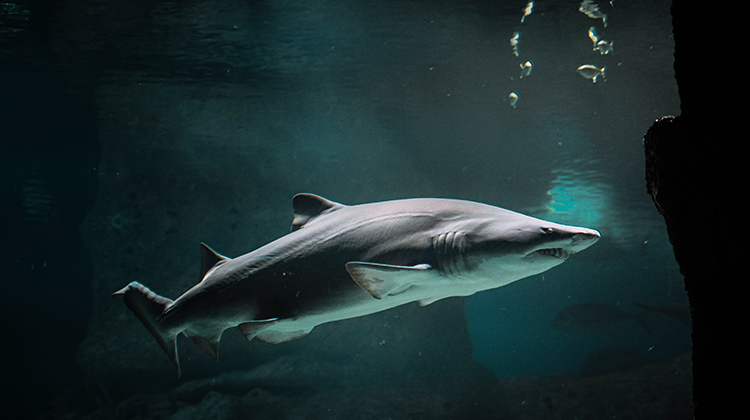Dive into the World of Sharks at the Australian Museum

Sharks, a new blockbuster exhibition, is now on at the Australian Museum (AM). Highlighting the very latest science and with deep cultural overlays, Sharks invites visitors to explore the diversity of these ancient fishes.
Featuring over 100 specimens and artefacts from the AM collections, visitors will encounter 11 life-sized scientifically accurate models including an eight-metre whale shark and the now extinct 270-million-year-old Helicoprion (also known as the buzzsaw shark); the rare deep sea Goblin Shark which dates back 125 million years; and the nation’s first taxidermy spine of a Shortfin Mako shark.
Alongside the scientific specimens, visitors will also be able to see over 30 significant cultural objects, including several specially commissioned for the exhibition, and discover how First Nations and Pasifika Peoples knowledge of sharks can help protect them. State-of-the-art projections and a specially designed ‘oceanarium’ showcasing the majesty and power of sharks swimming through the ocean will captivate visitors.
Amanda Hay, Ichthyologist, Australian Museum Research Institute, said all sharks big and small, from the deep oceans to the coral reefs have an important place in our ecosystem.
“Their diversity is incredible, and we know this because as a natural history museum we hold the reference collections to our planet’s biodiversity. People will get to see shark species in this exhibition they never imagined existed,” Hay said.
In addition, the AM sought out input from shark experts including conservationist Valerie Taylor AM and science officers from the NSW Department of Primary Industries and CSIRO.
Three years in the making, Sharks has been developed, designed and built by a team across the AM, including scientists from the Australian Museum Research Institute (AMRI) and the AM First Nations team.
Incorporating scientific data directly from the AM’s team of scientists and collaborating partners, the interactive exhibition includes specimens and cultural artefacts that showcase the beauty, diversity and jaw-dropping size and scale of sharks. Visitors will be able to navigate through a shark body, see the world through the eyes of a hammerhead shark, detect swimming sharks from a Clever Buoy, discover how Pasifika Peoples interact with sharks by calling them to shore and be immersed in an ‘oceanarium’ with sharks swimming all around. The very latest information on conservation, shark products and shark safety will also be highlighted enabling visitors to make informed choices.
Image by Vova Krasilnikov